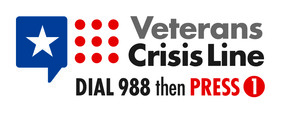
VA headquarters building in Washington D.C. (Photo: J. David Ake – Getty Images)
The VA has introduced a three-part effort to simplify how survivors and dependents of deceased Veterans and Service Members access benefits and support services. The plan involves moving the Office of Survivors Assistance, establishing a dedicated outreach team, and increasing the use of automation in handling claims to improve accuracy and reduce delays.
Starting this month, the VA will move the Office of Survivors Assistance, OSA, from the Veterans Benefits Administration back to the Office of the VA Secretary. The office had been transferred in 2021 during the previous administration, a decision the VA now says led to reduced effectiveness by isolating OSA under layers of bureaucracy. The relocation is intended to restore OSA’s original advisory role with direct access to VA leadership. A five-person team will now guide policy decisions and oversee programs related to survivors and dependents, helping shape legislation and survivor-related policies moving forward.
At the same time, the VA is launching a new White-Glove Survivor Outreach Team. Based at the Philadelphia VA Regional Benefit Office, the team will consist of trained experts who will help survivors navigate the Dependency and Indemnity Compensation, DIC, claims process. These specialists will provide personalized assistance throughout the entire process to help families receive the benefits they are eligible for, aiming to close long-standing gaps in communication and support.
The third part of the plan focuses on expanding automation. The VA now processes more than 1,000 DIC payments or adjustments daily through automation and is working to raise that number by identifying additional opportunities. Officials say the added automation will reduce delays and make it easier for families to access their benefits without having to go through a complicated manual process.
VA Secretary Doug Collins emphasized that the department is focused on removing barriers and improving service during times of grief.
“The last thing survivors need in their time of grief is frustrating red tape and bureaucracy. That’s why we are creating a better system to more quickly and effectively provide survivors the services, support, and compassion they’ve earned,” Collins said.
The department says it is working to return to what leadership describes as its core mission of serving Veterans, families, caregivers, and survivors. In the first 100 days of the current administration, the VA has taken steps such as opening six new clinics, ending remote work for thousands of employees, cutting non-essential spending, and eliminating programs not directly related to its mission.
The survivor-focused reforms are set to begin immediately, with full implementation continuing through 2025.












